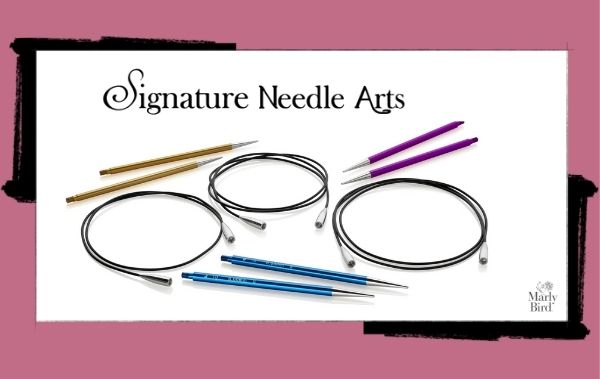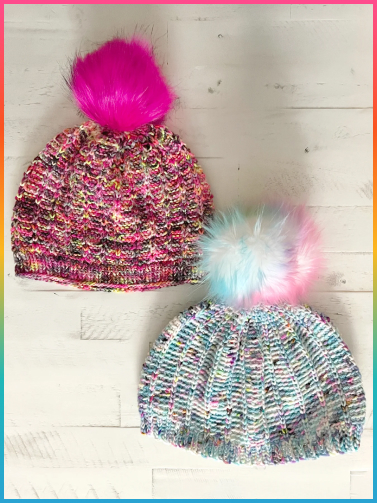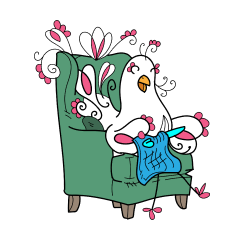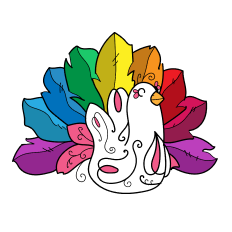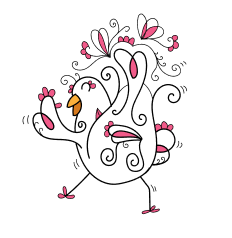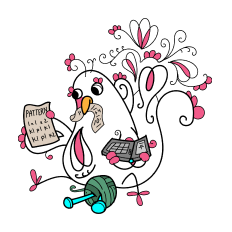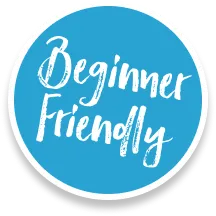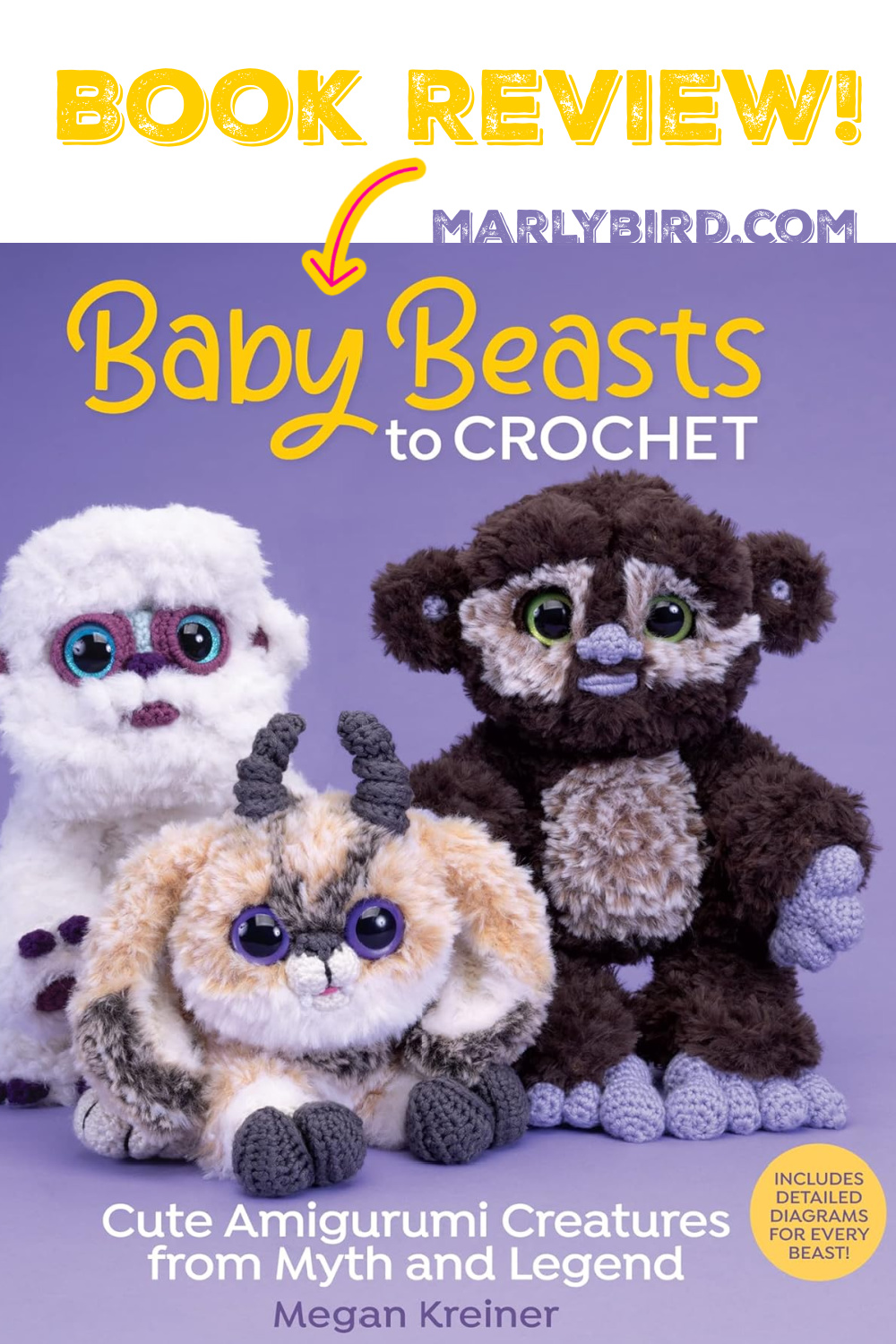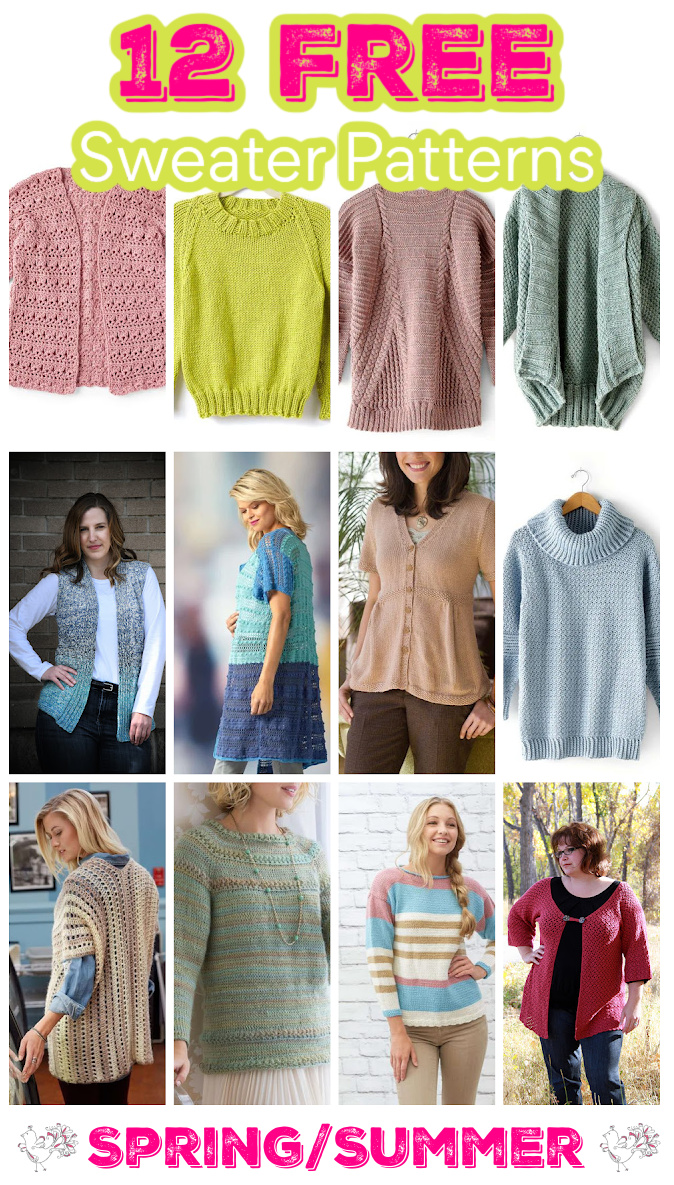Ultimate Guide to Knitting Needles: Everything a Beginner Needs to Know
Are you ready to start knitting? If so then the first thing you need to figure out is what kind of supplies you’ll need to get started. Obviously, you’ll need knitting needles. Pretty soon, choosing your needles for a project will be second nature. But as you get started, it can feel a little daunting. This guide tells you all there is to know about different types of knitting needles. After all, the more knowledge you have, the easier it will be to make decisions about your supple needs.
NEW TO KNITTING? SIGN UP NOW FOR MARLY BIRD’S FREE BICRAFTY BOOT CAMP: KNITTING LESSONS FOR CROCHETERS. NON-CROCHETERS WHO ARE NEW TO KNITTING ARE WELCOME TOO.
Note: This post may contain affiliate links which means I get a percentage of sales made from those links. Your price doesn’t increase. Thank you for your support.
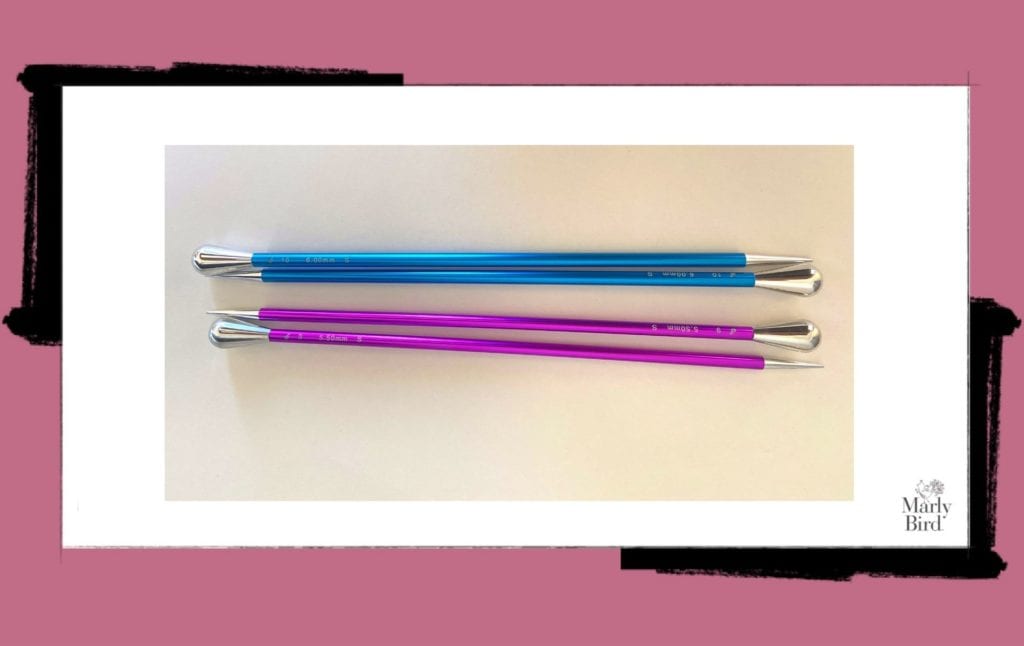

Note for Crocheters Learning to Knit
If you’re a crocheter seeking to become bicrafty by learning how to knit then you have a bit of an edge up on others. You already know the anatomy of a crochet hook. While knitting needles differ from crochet hooks, you’ll be able to easily grasp the different parts of the needle.
Likewise, you’ll quickly comprehend that knitting needles can be made in different sizes that correspond in large part to the yarn that you’ll use. When you look at a yarn label, you’re used to checking what size crochet hook it calls for. Although you’ve likely ignored it for years, there’s a knitting needle size listed there as well. For example, Red Heart Hello Gorgeous yarn is a worsted weight yarn that calls for size I-9 (5.5 mm) crochet hook or size 8 (5 mm) knitting needles.
Also,, you’ll know that knitting needles can be made from different materials (such as aluminum or bamboo.) However, don’t assume that what’s true of yarn on hooks is exactly the same on needles. There are slight differences that you should be aware of when choosing your knitting needles.
Finally, when you go to look at knitting needle options, you might feel overwhelmed because there are soooo many choices. But think of it like with crochet hooks: there are tapered and inline crochet hooks, hooks made of different materials, different hook sizes, and ergonomic hooks. You could easily spend a fortune buying them all but the reality is that when you get started as a beginner, you only need a few. Then over time you’ll explore others. Don’t let it overwhelm you. You can start with a few basic knitting needles and expand later.
3 Types of Knitting Needles
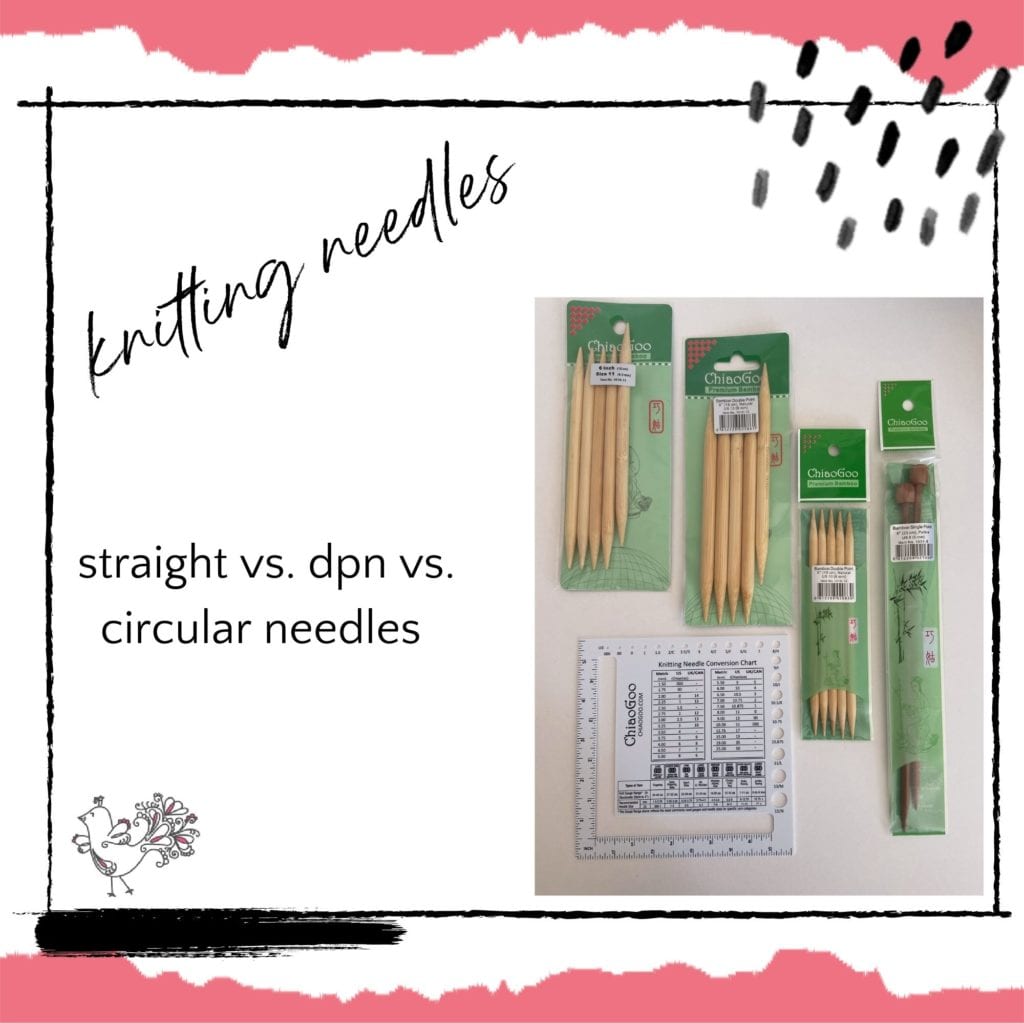

There are three main types of knitting needles: straight needles, double point needles (also called dpns) and circular needles. The very brief summary is that straight needles are for working in rows, dpns for working in the round, and circular needles can do both. Circular needles are the most versatile and tend to be the option of choice for many knitters so as a beginner that might be where you’d like to start.
Straight Needles
If you’ve ever seen a drawing of someone knitting then you’ve probably seen straight needles. Or if you ever watched your grandmother knit when you were young, then you probably saw her straight needles. After all, they were the only kind around when she was learning knitting as a girl. So, when you first picture knitting needles, this is probably what you have in mind.
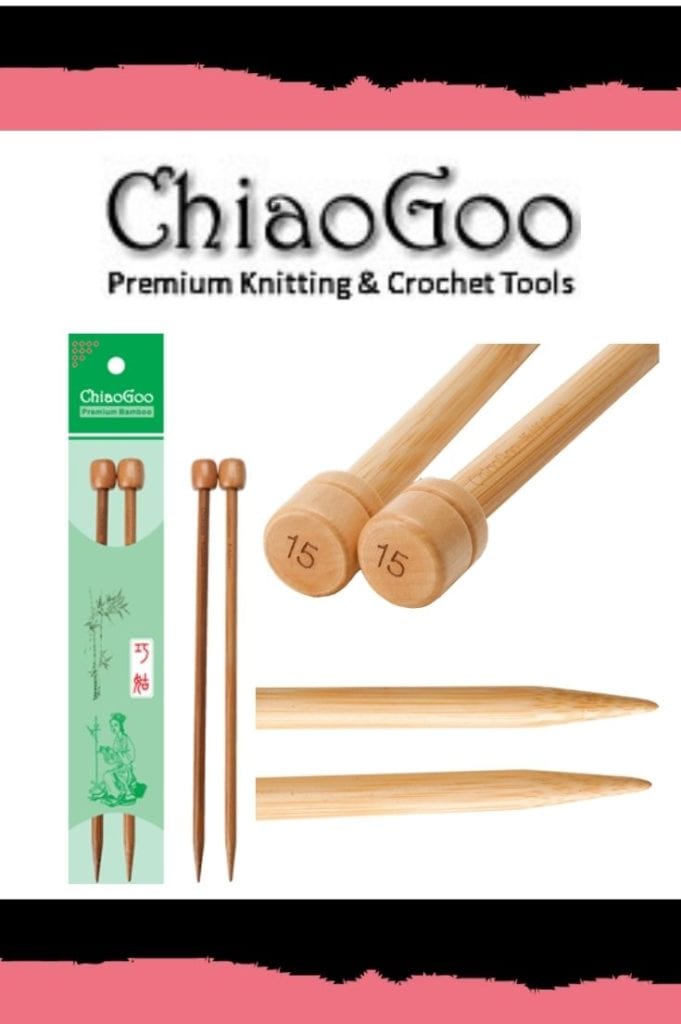

Straight needles are used to work back and forth, never in rounds. They are usually 10″ – 14″ in length. And they can get quite heavy. Therefore, they aren’t the most common needles used in the US today. Depending on the type of knitting you’re doing, you may want some, though. It’s good to know what they are. Sometimes these are also called single point needles.
Even within this category, there are different options. For example, ChiaoGoo has straight, speciality, and flexible single point needles.
Double Pointed Needles (DPNs)
Whereas single point needles have a pointed end on one side and a flat end on the other, double pointed needles have points at both ends.
Double Pointed Needles are shorter, and therefore lighter, than straight needles. They’re typically about 6″ – 8″ in length. You don’t buy them individually but rather in sets of either 4 or 5.
You’ll work on either 3 or 4 of them at a time, working in the round, using the loose one to knit with. Beginner knitters may want to get a set of DPNs to work with.
Circular Knitting Needles
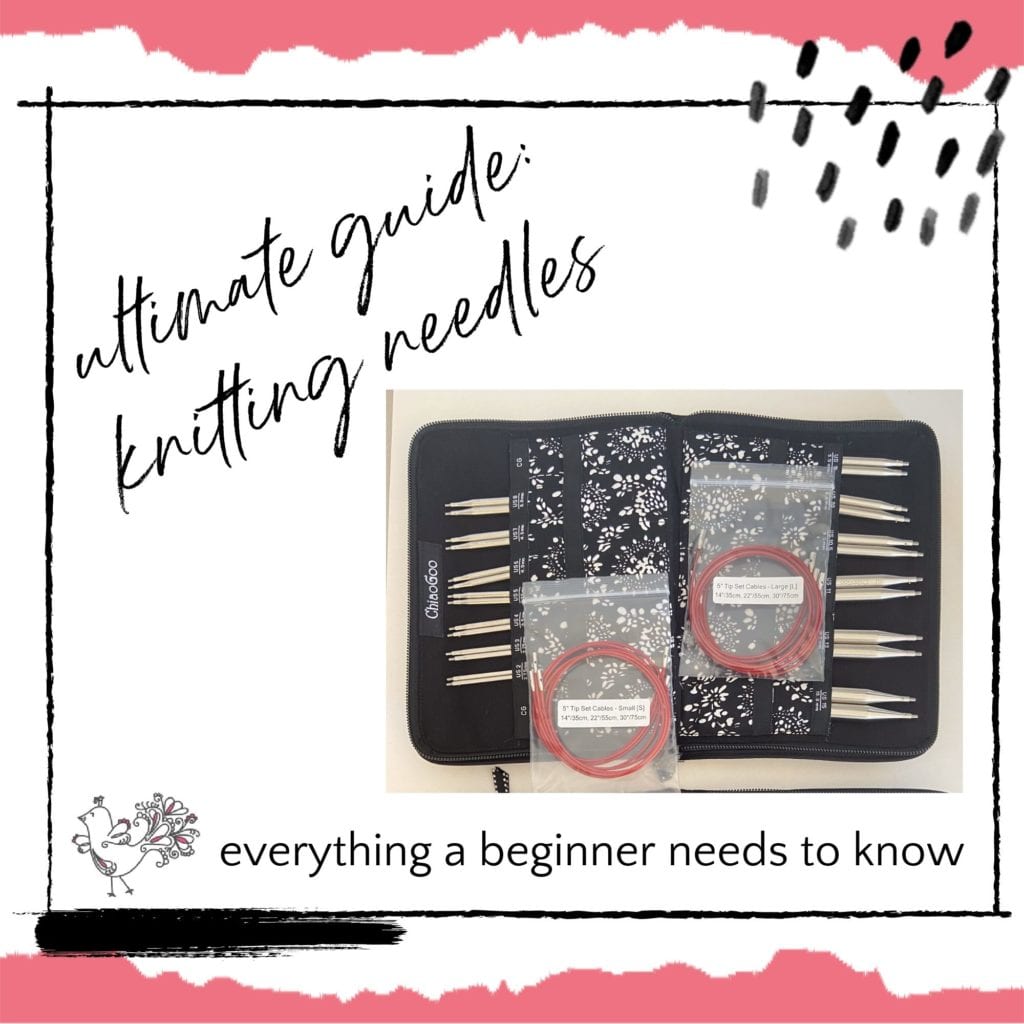

Circular knitting needles are versatile knitting needles used to work both in rows and in the round. Therefore, they’re a popular choice. If you’re seeking to buy knitting needles for the first time then circular knitting needles are your best bet.
As we’ll discuss more below in the section on the anatomy of a knitting needle, circular knitting needles have a cable. The cable holds the stitches for you. (Whereas on a straight needle all of the stitches are on that long needle, on circular needles, they’re held on the cable). We’ll discuss this further in the section below on knitting needle sizes.
Interchangeable Knitting Needles
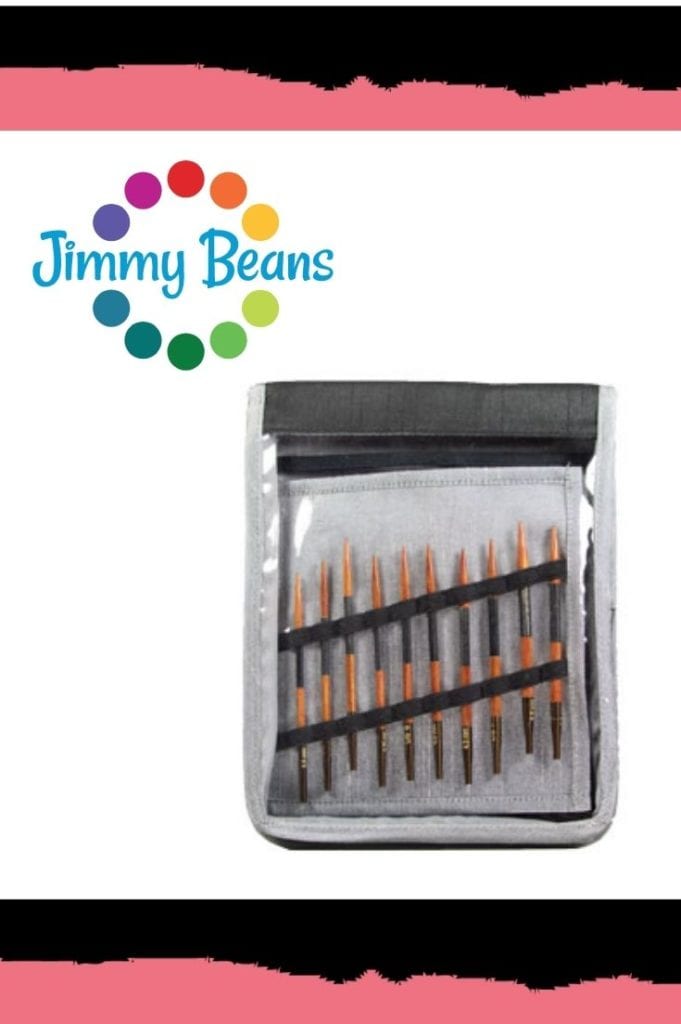

Interchangeable knitting needles are a specific type of circular knitting needles. With regular circular needles, you’ll buy a bunch of different sized needles as well as different sized cables. An interchangeable knitting needle set allows you to detach the cable from the rest of the needle so that you can mix-and-match your sizes. Beginner knitters would serve themselves well to get a set of interchangeable knitting needles.
That said, they have pros and cons. They feel a little bit different than regular circular needles (because there’s a place where the parts pull apart on interchangeables.) What you prefer is up to you and you’ll just have to try different types and brands of knitting needles to figure that out.
One important point is that you won’t remove knitting needles from a project that’s in the works. Sometimes crocheters take a hook out of one project to use it on another. But with knitting that can easily lead to the first project falling apart. Therefore, if you are going to have different WIPs going at the same time, you’ll need different needles in each of them. With interchangeables, you might have the needle part you need in an existing project so you can’t use it for another. If that sounds like you, then you’ll either need multiple sets of interchangeable knitting needles or you might want to try sets of circular knitting needles so you can use different sizes in different projects.
Note that “regular” circular needles (that aren’t interchangeable) are also called fixed knitting needles.
Note also that there is a tool called a cable knitting needle. It’s essentially a cable that is made of a solid piece of wood or aluminum. We’ll discuss this tool more in our upcoming article on Knitting Tools, Supplies, and Notions.
Anatomy of a Knitting Needle
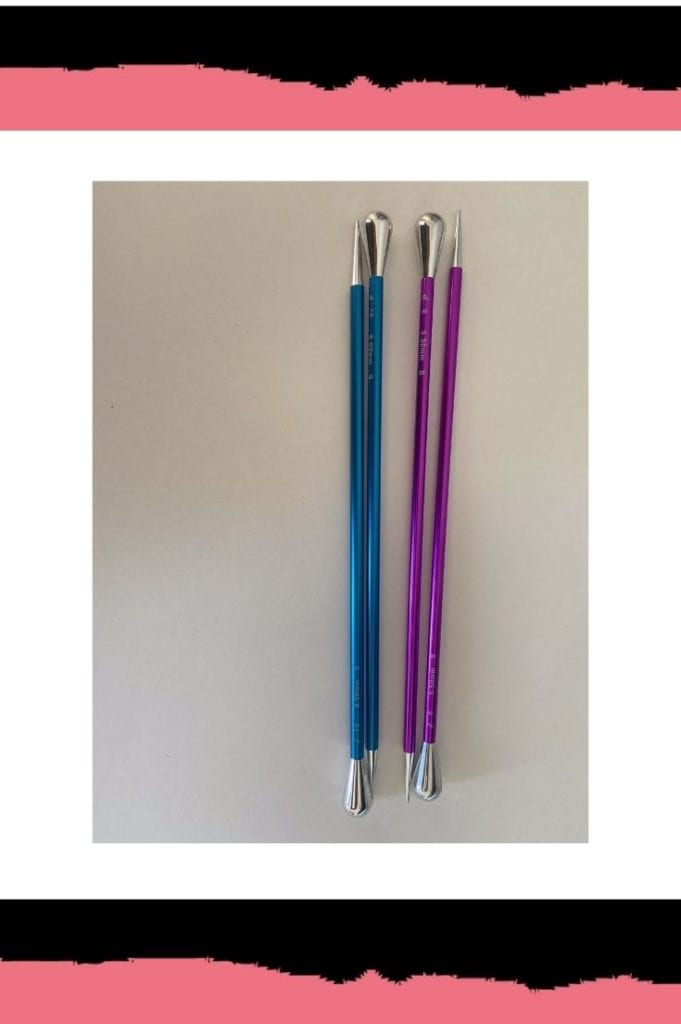

Each knitting needle has certain parts. Each part can have slight variations that have different pros and cons for different projects. Here’s what you need to know about the basic anatomy of a knitting needle:
Tip, or Point, of a Knitting Needle
In terms of where this is located on the knitting needle, it’s pretty obvious. So why does it matter? Because you can have tips in varying degrees of sharpness. There are very sharp points and much duller points. Neither is better than the other overall but what you want can vary significantly depending upon your knitting style, the pattern, and the yarn that you’re working with. Therefore, as a beginning knitter, you’ll want to explore needles with different tip sharpness to figure out how they each work for you.
Needle Shaft
If you’re a crocheter then you know that a crochet hook has a shaft. It’s the part of the hook that is flat instead of round. On knitting needles, there’s a tapered part and then there’s the shaft which is not tapered. You don’t want your stitches to fall off of the knitting needles. Therefore, they need to sit up on the shaft of the needle.
Cable
When working with straight needles, you may use a cable to prevent stitches from falling off as you work. The cable size is proportionate to the needle size. In other words, bigger needles use bigger cables. The stitch size may be affected by the cable size, which is why this matters.
Circular knitting needles also have cables. However, they are skinny cables that don’t typically affect the size of the stitches. However, the place where the shaft joins the cable can be rough or uneven if you’er using poor quality of damaged knitting needles. This can make your knitting more difficult. Look at this area of you’re troubleshooting problems with your knitting needles.
Knitting Needle Sizes
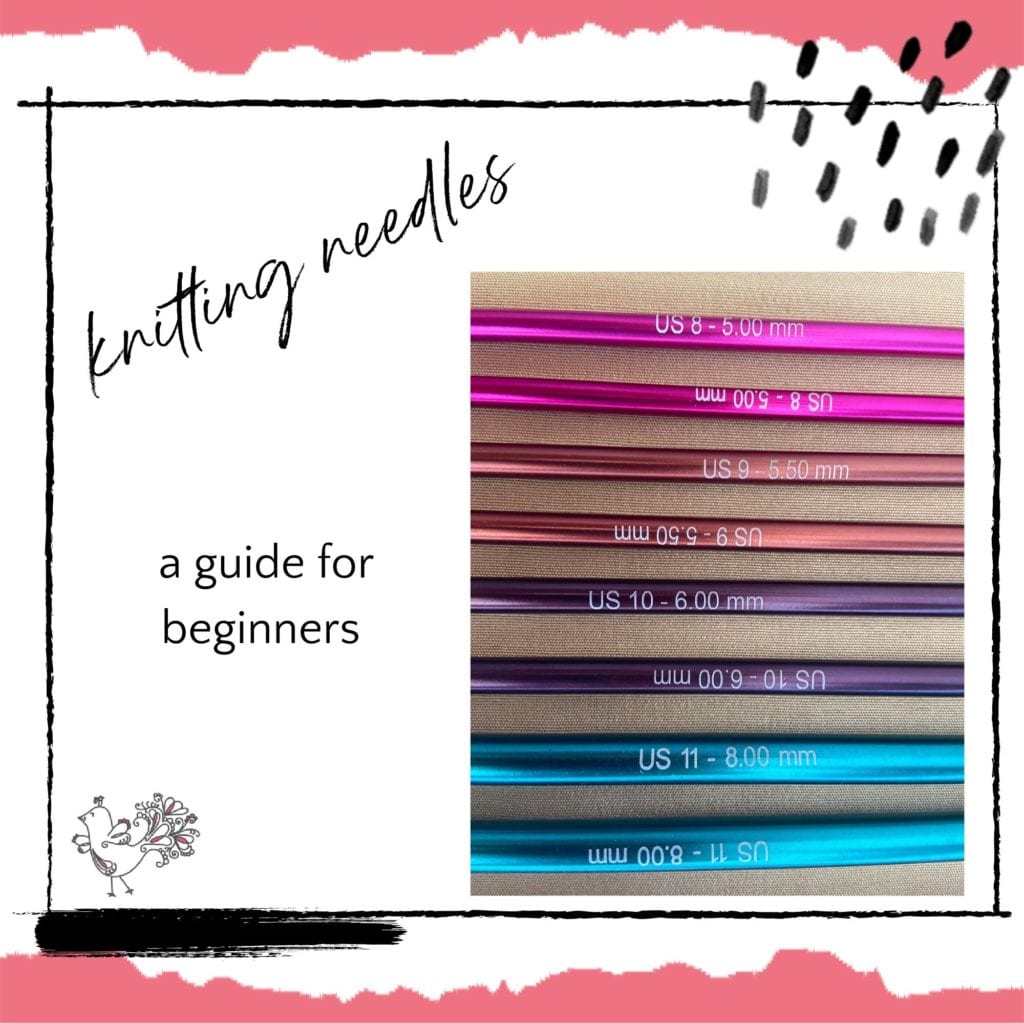

There are two different measurements you need to know for knitting needles: the length and the needle size.
Knitting Needle Lengths
The length is pretty straightforward – the measurement of the needle from tip to end (on straight needles) or tip to tip (on circular needles). For example, ChiaoGoo offers straight knitting needles in five sizes: 7″, 9″, 12″, 13″ and 20″.
But don’t forget that you’ll use cables on circular needles and cable lengths also differ. As you get more into knitting, you’ll get a better sense of the cable size you’ll need for different projects. For example, if you’re knitting a large project such as an afghan, then you want a cable that’s at least 36″ long. On the other hand, if you’re knitting a hat, you’ll want a shorter cable. Note that you’ll often use different size cables – or needle lengths – even within the same project. As a beginner, rely on the pattern to let you know what to use.
Going back to the topic of interchangeables, let’s say that you have circular needles in sizes 6 and 7 and you have each one in lengths of 16″ and 24″ and 36″. So you have six needles all together – 3 lengths for each of two sizes. If you use interchangeables instead, then you’ll have two shafts (size 6 and 7) and three cables (to bring the lengths to 16″ and 24″ and 36″.) And of course you might use those cables on other size needles as well. So that should give you a sense of different needle sizes and how cables work when it comes to interchangeable circular knitting needles.
Knitting Needle Sizes (mm)
If you’re a crocheter then you know that crochet hooks are measured in sizes. As described above, a worsted weight yarn pattern might call for a size I-9 (5.5 mm) crochet hook. Often, that number is written / etched right on to the crochet hook. So you can look at the hook and see what size it is.
Unfortunately, knitting needles are less likely to have the size written right on the needle. (Straight needles often do but other needles often don’t.) However, there are different sizes just like there are with crochet hooks. And it’s actually not that hard to figure out what size your needle is thanks to needle gauges. You should keep one of these handy at all times. You simply stick the knitting needle through the holes until you find the one that matches up, and then you’ll know what size knitting needle you have in your hand.
The size of your crochet hook or knitting needle typically corresponds to the weight of the yarn. The smallest knitting needles are 000 – 3 for fingering weight and sock weight yarn. Mid-weight yarns like DK and worsted calls for size 5 – 9 needles. And there are needles that start at size 17 and go up to as high as 50 for jumbo yarn.
That said, you might use a bigger hook / needle with a finer yarn in order to achieve a certain effect. And you might go up or down a size to achieve the gauge that the pattern calls for. Play around with different knitting needle sizes as you get used to the craft.
Materials of Knitting Needles
Just like with crochet hooks, there are different materials used to make knitting needles. You’ll commonly find them made of metal, wood, and plastic. You might also find needles made of other more unique materials.
Each material grips the yarn a bit differently. The yarn will slide around a lot on metal needles. It won’t slide nearly as much on wooden needles. Since you don’t want to drop your stitches, the material can matter a lot. But it’s all about what you’re comfortable with. Try different types of knitting needles to see what material works best for you.
Ready to Buy Some Knitting Needles?
Check out our suggestions for the best knitting needles for beginners.
How to Store Your Knitting Needles
You’ll want to store your knitting needles in an organized fashion. In particular, if you have knitting needles that don’t have the size written right on them, then it makes sense to store them in order of size. That way you’ll easily see what size you’re grabbing from storage for your project. Of course, you can double check it with your needle gauge but make life easy on yourself by keeping it organized.
There are many different options for storage. Some are more aesthetically pleasing and others are more functional. You might have more than one storage option. For example, if you have your grandmother’s old straight needles with the size etched into them then you might store those in a beautiful vase on your craft table. Then you might have a big storage area that holds the majority of your needles and cables. And you might also have a set of knitting needles in an organized storage caddy that goes with you wherever you go. The main thing is that you want to be able to easily access whatever knitting needles you need for a project.
Here’s our complete guide to knitting needle storage.
You Might Also Like:
Categories: Knitting, Product Reviews

